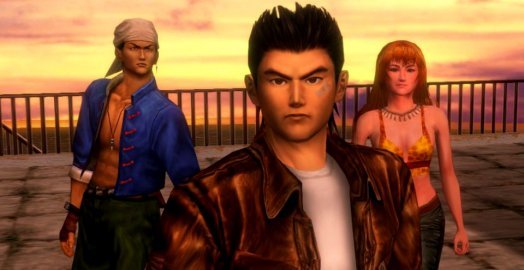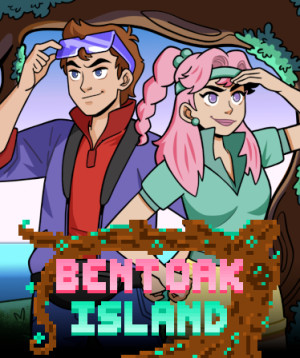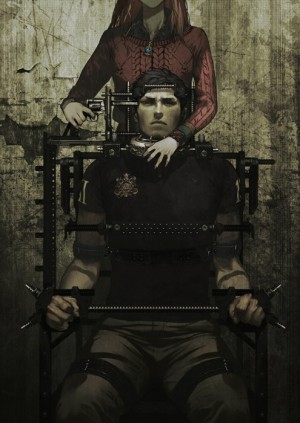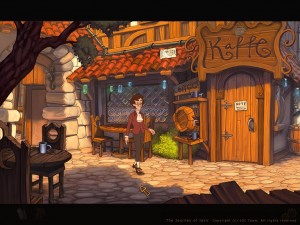Shenmue flashback review

Few games in modern memory have sparked such an outpouring of emotion from fans as Shenmue. Famous scenes of hysterical breakdowns and tearful dedications plagued the internet circa 2015 when the long-awaited Shenmue III was announced as a Kickstarter campaign, which within hours of its launch was able to surpass its target, going on to break the crowdfunding donation record for a video game in the process. This was soon followed by a rerelease of the first two games together on PC and current-gen consoles for the first time, introducing the series to a whole new audience almost two decades after the originals.
For those of you already familiar with Shenmue, you probably already know full well why the series is so beloved, but for those of you, especially the younger generation, wanting to know what all the fuss is about, first a little history lesson.
The original Shenmue, the brainchild of SEGA’s mastermind director Yu Suzuki, was beyond ambitious and astronomically expensive, even by today’s standards, and it was a complete financial failure. It is said to have even been a major contributor to the downfall of the SEGA Empire. The game launched right at the end of 1999, exclusively for the technically advanced but commercially outclassed Dreamcast console, after going through multiple iterations and platforms. Shenmue was purportedly the most expensive video game ever made and is often considered a pioneer for open world environments and interactive cut scenes, with Quick Time Events that never allow players to drop their guard – or in this case, the controller.
The base storyline is straight out of any Kung Fu action flick, where the plot serves as a somewhat forced excuse for over-the-top fighting. Set in the mid-1980s, the main character, 18-year-old Ryo Hazuki, returns home to the family dojo, where he witnesses his father (who is also a martial arts master) die at the hands of a mysterious Chinese man named Lan Di, over what seems to be a mirror trinket commonly found at any discount souvenir market.
Ryo swears revenge against his father’s killer, but as he begins to conduct his investigation, the story expands massively into an epic tale of exploration, intrigue and mythology. Ryo discovers that his father brought not one but two of these so-called mirrors home from China, and that they could form a key to an ancient Chinese civilisation, which in the wrong hands could possibly change the world order as we know it. Along the way, you’ll encounter a wealth of memorable characters who provide essential information, whether about Lan Di, the mysterious past of Ryo’s father, or the whereabouts of a martial arts master who could help uncover the truth. And as all this happens, a Chinese girl begins appearing in Ryo’s dreams, foretelling a grand prophecy.
As vast as it becomes, the story is glacially slow. Most of the entire first game is spent investigating the tiniest of leads, including a hilarious lost-in-translation hunt for sailors, and performing real-life responsibilities like going to work and feeding the community cat. While the sequel does somewhat pick up the narrative pace, the combination of real-life elements, such as giving morning service to a temple, reinforces the notion that you are living a life day by day, rather than solely experiencing a story. Another reason for the slow pacing is that the game doesn’t go out of its way to help you. There is no GPS, no waypoints or highlighted objects.
But it is this lack of instruction that helps make Shenmue a truly unique experience. Rather than having objectives handed to you one after the other, you are forced to wander the streets, talking to the local citizenry and searching literally every cabinet and drawer. And the developers have provided for this in abundance. The environment is packed with detail, both pivotal to the story progression as well as inconsequential collectibles and pop culture references.
Never before – or maybe since – has a developer approached a level of realism like that in Shenmue. The quaint suburb of Yokosuka, Japan has been authentically modeled, and despite being open in nature, this world still requires you to abide by the laws of both time and country. Ryo’s pursuit of vengeance takes a back seat to daily activities for much of the game, and there is a rigid schedule that you will have to adapt to. Businesses have certain opening and closing times. Most shops open in the morning, restaurants in the afternoon, and bars in early evening, with people changing their locations throughout the day.
There is even a functional economy here. Ryo needs to find work to pay for travel fares and other things which, like any job, takes up most of the daylight hours. The money earned is used mainly for completing elements of the main story, but in the end, if you choose to spend all your hard-earned cash at the video arcade or in the convenience store, then it’s your own prerogative.
Shenmue II, released two years after the first game, expands enormously on the environment from the original, taking Ryo to the hustle and bustle of Hong Kong, the seedy underworld of Kowloon, and along the picturesque Li River through mainland China. The sequel maintains the same level of graphical detail as the first, although even at the time the engine was starting to show its age when compared to newer titles. A consequence of this greatly extended world is that it forced the developers to sacrifice some of the details and smaller environmental interactions. The focus here is more on conversing with an interesting cast of characters that tag along with Ryo.
Both Shenmue I and II were advertised as martial arts fighting games, but the fact is that most of your time is spent walking around talking to people, or rather waiting for people to be done with their responsibilities before they are free to chat, rather than bashing your way through hordes of enemies. Despite the relative lack of action to be found, however, it is still an essential element of gameplay, as winning in hand-to-hand combat is the only way to advance though major story intersections. Failing to do so could set you back, divert you onto another story branch, or result in “Game Over”.
But even this aspect receives the Shenmue treatment. While only about 20 minutes of the first game is spent in physical altercations, it never stops reminding you that Ryo will need to engage in various forms of martial arts to quench his thirst for revenge. Much like a real fighter, you must constantly train Ryo to hone his skills and master new moves that he learns throughout his travels.
Like much of the game, the acquisition and development of new moves is optional, requiring increasingly complex button combos on the controller, and fights toward the end of each chapter will demand considerably more skill than Ryo begins the game with. Shenmue II increases the emphasis on battles as Ryo ventures into the meaner streets of Hong Kong, but thanks to the much larger scope of the overall experience, the ratio of exploration to combat remains roughly the same as the first.
While they are commonplace now, the first Shenmue is also credited with popularising Quick Time Events, or QTEs, forcing you to channel your inner warrior by staying alert at all times, whether walking casually down the street in broad daylight or even watching a cut scene, lest you miss responding to unexpected on-screen action prompts.
Ryo is also faced with a number of puzzles in order to answer some of the mysteries surrounding the death of his father. No puzzle is repeated, and although simple in nature they represent real-world situations. Some are as simple as sliding objects around a room to uncover a hidden door, while others are more intricate, tapping into the ability of others to translate scriptures to find hidden meanings. In typical Shenmue fashion, one puzzle even involves you listening to a tape recording for an hour or two for clues.
The majority of the gameplay, however, centers on young Ryo’s investigations. You’ll need to roam the streets and talk to people to find out what they know, sometimes multiple times, and chase leads that are noted in a journal. In essence, the bulk of the experience plays out like an open world adventure game. But not one that handles very smoothly. It very much plays like a late-nineties console game, with Ryo being a little stiff to maneuver. Traditional mouse and keyboard controls feel very jerky and unnatural in the PC port, and the fight sequences were near impossible for me with this setup. The experience feels much more natural using a gamepad, as was originally intended.
The heart and soul of the Shenmue world was always intended to be its characters. Every single person encountered – and there are hundreds – have their own names, occupations and daily routines. All of these NPCs can be interacted with, revealing their individual personalities and motivations for either helping or hindering Ryo in his quest. Some, like in real life, will become close friends while old acquaintances will grow apart with time.
But it is in these interactions where Shenmue begins to falter slightly. Very rarely are you presented with the opportunity to direct conversations. Instead, dialogue takes place simply by going up to a person and pushing the action button, activating an exchange of words. The information currently in Ryo’s notebook will dictate the topic being discussed, with optional responses reserved mainly for when Ryo is asked a yes or no question.
The English voice acting is rough in certain areas, with translations from Japanese to English making for some cringe-worthy moments. To me this just adds to the charm and identity of the series, though it will most likely be off-putting for newcomers. For those who don’t really feel the same sense of nostalgia, the game does come with Japanese voice acting (and English subtitles), which is better and can be switched on and off at any time.
The music can also seem a little dated now, with the audio not receiving a quality clean-up in the rerelease like some of the visuals. But the choice of music for each area for the most part is directly correlated with what is happening on the screen, all with a suitably Japanese or Chinese flair. The Asian soundtrack really did whisk me away and remind me that I was not in the West anymore.
There is no doubt that Shenmue was ahead of its time, a revelatory leap forward into modern gaming that helped shape the industry into what we know today. But despite the obvious influence it has had over the years, none of the core elements that make Shenmue truly unique ever caught on in its day. That’s because the realism in its gameplay structure plays like a drawn-out epic adventure novel, sparing no detail too small, demanding that the player slow down and engage with the world thoughtfully as opposed to other blockbuster open world role-playing games.
It is this very deliberate pacing and focus on the mundane that has historically divided both critics and fans alike on Shenmue’s place among the greatest games in history. This level of detail succeeds at creating one of the most immersive and interactive experiences for some but can be a great inconvenience to others, being forced to wait for certain events or ending up investigating the wrong path without any in-game guidance.
The rerelease of Shenmue I and II for PC, PlayStation 4 and Xbox One came out of the blue, especially since its original developer, SEGA, has nothing to do with the production of Shenmue III. Nevertheless, video game retailers were left bemused when this modest, low-budget port sold out across entire cities, with some patrons buying multiple copies, sometimes for the same system.
Viewing these games nearly 20 years after they were originally released offers a new perspective than it did at the time, of course. In my early teens, I could never imagine there ever being an argument about their genius, but after experiencing this rerelease and comparing it to other games that have followed since 1999, it is easier to see the other side of the coin.
Don’t get me wrong: I still think it is the best video game ever produced, but now, especially with newer benchmarks for open world games, it is understandable how such a title, with its slow story deployment and focus on the everyday elements of life, wasn’t able to break into the mainstream and perhaps never will, even given a second chance. Cult classic? Definitely. Masterpiece? Debatable for some. Blockbuster hit? Unlikely.
The Shenmue I and II HD Collection is nearly faultless technically but offers only minor upgrades, with slightly smoother graphics adapted to suit modern displays, despite the cinematics still being displayed in 4:3 aspect ratio. While leaked screenshots and videos showing that a complete remastered version of the two games – more along the lines of SEGA’s spiritual successor, Yakuza – was once in the works, leaving fans wondering what could have been, this new edition still manages to transport you back to another time and place, without the performance issues of the underpowered hardware of its day.
The thing about Shenmue, both now and then, is that it doesn’t really fit into any one genre, which makes it difficult to categorize. Its lack of regular action may turn away mainstream gamers, while the presence of what little fighting there is could deter adventure gamers, and the reliance on the passage of real time requires even more patience to see it through. In effect, the series’ groundbreaking style of gameplay was only ever going to appeal to a niche market, despite its AAA budget. And this continues to hold true today. While fans of the franchise will welcome the chance to revisit a favorite on modern platforms, eagerly killing time until the third installment, newcomers will likely fall into either the love-it-or-hate-it side of the argument the same way players did almost twenty years ago.
But for me, even as an adventure gamer primarily, the first two Shenmues combine to form the greatest gaming experience ever made. A technical marvel at the time, they collectively represent a masterpiece of storytelling with unique genre-blending gameplay that still holds its own to this day. They are packed with content, incredibly epic and intricate, and the characters are lovable and rich in personality.
It is important to note, however, that these are only the precursors to something much bigger still to come. Shenmue was originally planned to span eleven chapters. To put that into perspective, both the first and second games together only advance the story to the end of chapter five, and even after dozens of hours of playing through to the end credits in Shenmue II, we’re left with many more questions than answers. The third installment promises be a completely modern take on the series, but anyone interested in the upcoming game will need to play these two classics first.
WHERE CAN I DOWNLOAD Shenmue
Shenmue is available at:
We get a small commission from any game you buy through these links (except Steam).Our Verdict:
While anything but a traditional adventure, the genre-blending saga of Shenmue I and II was once an influential pioneer in gaming history, and even twenty years later their bundled rerelease is a must-play for anyone who enjoys intriguing storylines and highly interactive, detailed open worlds.

















![Event[0] - Game Review](https://cdn.nivoli.com/adventuregamers/images/screenshots/31241/image001__medium.jpg)
















